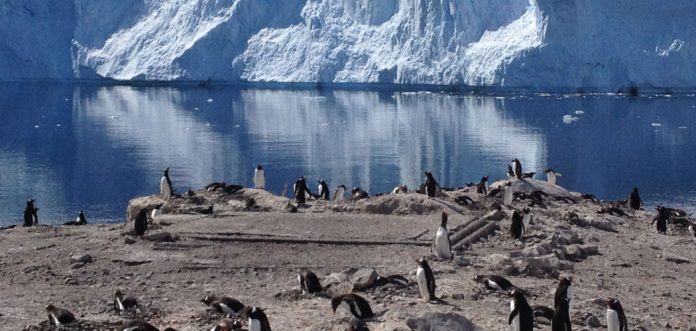NEXT TIME YOU’RE FRANTICALLY SEARCHING FOR AN ICE CUBE TO POP INTO YOUR PIMM’S, CONSIDER THIS: 90% OF ALL THE WORLD’S ICE IS CONTAINED IN THE ICE SHEETS OF ANTARCTICA. NO SHORTAGE THERE THEN!
Almost the entire continent is covered by ice – only about 2% is completely ice-free – so it’s a hostile environment for all but the hardiest of species. Antarctica is also the coldest, windiest and most desolate place on the planet.
So why would you want to visit this oft-forgotten seventh continent that we didn’t even know existed 200 years ago?
The very remoteness of Antarctica has its own special appeal and while it’s never likely to feature on the backpackers’ trail, it has become one of the last unspoiled frontiers on the visitor map.
If you’re prepared to accept its challenging accessibility issues and able to dig deep into your pockets, Antarctica is a destination that will reward you with awe-inspiring scenery and an experience of one of the most pristine nature reserves in the world. Most visitors agree that Antarctica surpasses all expectations and all previous travel experiences.
“Antarctica was amazing,” enthuses writer Moz Scott, who visited with her partner, Philip, earlier this year, “It was the beauty of the place, rather than the cold, that made me shiver!
“The pristine landscape, the colours and sound of the ice … the way in which penguins and seals interact with their environment, they all took our breath away.”
According to the International Association of Antarctica Tour Operators, visitor numbers are set to climb to an unprecedented 40,000 this season, similar to Sark’s in summer time. This year in particular, many heading south to Antarctica are keen to pay homage to audacious explorer, Ernest Shackleton, exactly 100 years after his arrival.
Yet it’s all carefully controlled so as not to spoil the environment – visitors must even disinfect their boots before setting foot on Antarctic soil. Fortunately, preserving the landscape is a priority too for the 29 nation-states that share ownership of the continent.
Because it’s carved up so diversely, there is no official language. There are no mainland airports, no televisions and no supermarkets either. There are, however, scientific research centres and whaling stations, where most nations adopt their own local time zones.
This icy wilderness is an ideal place for scientists to research the various warm-blooded species such as whales, dolphins, seals and petrels (which include albatrosses) that thrive in Antarctic summer.
Unlike the northern Arctic, there are no polar bears here, nor any indigenous peoples. Conversely, there are 21 varieties of penguin in Antarctica but none in the Arctic. Observing these creatures up close and personal is one of the main draws for visitors.
“Penguins are astonishing, I could watch them for hours!” says Moz, “They glide and jump out of the water like dolphins. It is awe-inspiring how the various species have adapted so well to an environment that a human would find challenging.”
When winter begins with the sun setting in March and not rising again until October, clearly the best time to visit is the Austral summer, with December and January being peak season.
You’ll need to bring plenty of warm layers even so. Temperatures can plummet without warning. And don’t forget the sunscreen – reflection from snow and ice can do some serious damage when there’s almost round-the-clock sunlight coupled with a thin ozone layer. Another item you might need though is anti-seasick patches or tablets (to avoid resorting to a diet of ginger ale and dry crackers!).
The Antarctic waters are notorious for being some of the roughest seas in the world but with no airports – other than on the islands – boats are an essential mode of transport, ranging from the various sizes of cruise ships to the small, rubber Zodiacs launched for onshore expeditions.
From the water, one is rewarded with magnificent close-up views of the sculptured shades-of-blue icebergs and of the extraordinary wildlife above and below the sea.
“Always have your binoculars and camera at hand, even in the ship’s dining room – whales and albatrosses don’t appear on schedule!” advises Moz.
If you’re brave enough to take a dip into the near-freezing water, some cruises offer the opportunity to experience this while tethered to the boat’s safety ropes, ready to whisk you out at the first signs of any problems.
On the longer cruises (three weeks is currently the maximum), optional activities include cross-country skiing and snowshoeing, kayaking and even barbecuing and overnight camping on the Antarctic peninsula. No hotel chains or mass development will be allowed to turn the pristine landscape into another Dubai just yet. Thankfully.
If you’ve an appreciation for the awe-inspiring beauty of nature, its amazing wildlife and the great outdoors, Antarctica will significantly enhance your life’s experience. You will, however, need a basic level of fitness for overland treks offered even on the briefest of trips if you’re to take advantage of the total experience. Another benefit? You may even come back fitter than when you left!


